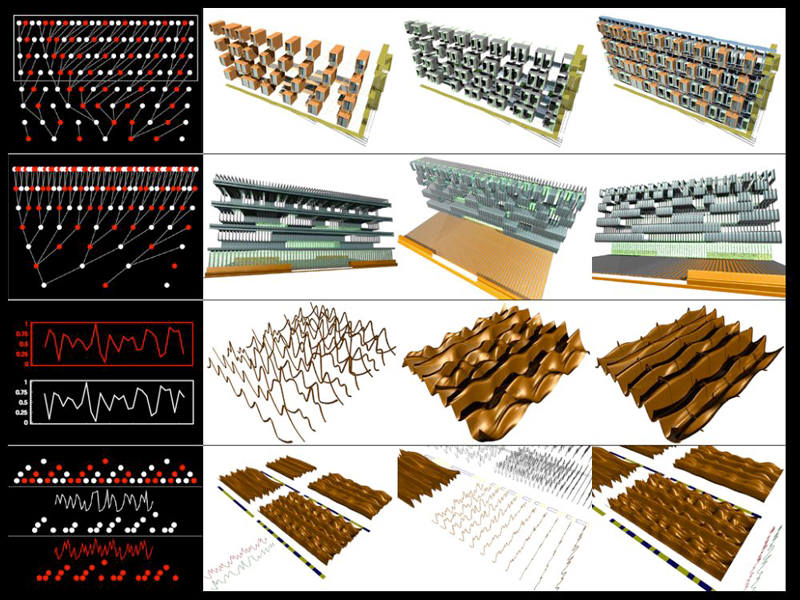
6. Organizational Logic over Conventions of Planning: Agent-Based Modeling
Replacing conventions of architectural organization with mathematical rules and algorithmic functions, then, offers the possibility of both the maintenance and mixture of architectural categories. These images collect a number of rehearsals toward ways in which simple algorithmic systems can organize architectural material. The bottom-up system used here is cellular automata. Each study begins with an agent-based model that uses component-agents with neighbor-dependent rules toward a generative organization of coded materials. In the top two series, for example, a cell will recognize the state of its neighbors and, based on that state, will generate a new group of cells that will, in turn, execute the same rules that produced them. This particular system grows by writing over itself and, in doing so, demonstrates the collapse of representation and production that is the hallmark of computing.